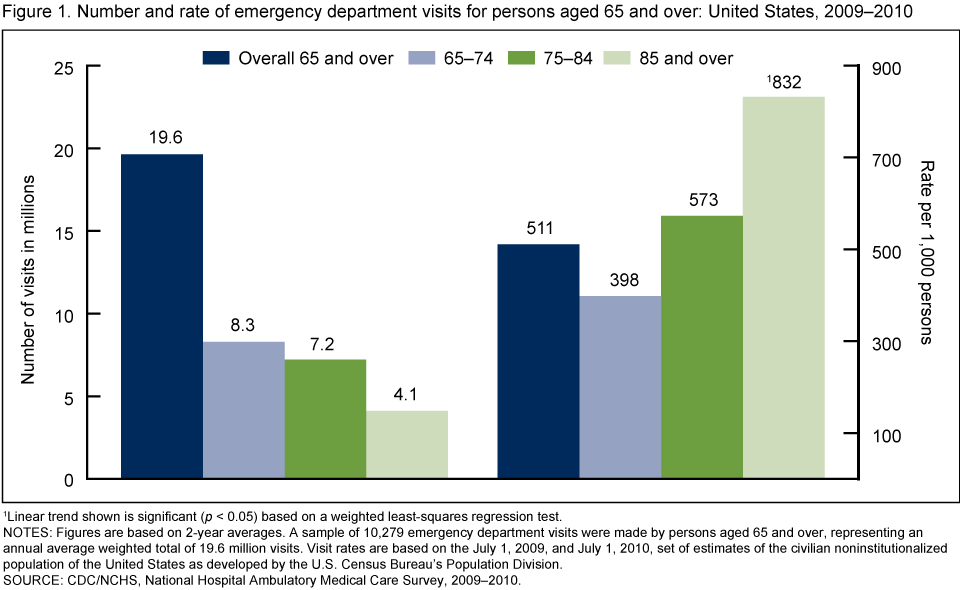Emergency Department Visits by Persons Aged 65 and Over
Posted on byFrom 2000–2010, the number of persons in the United States aged 65 and over rose 15%, from 35.0 million to 40.3 million, and in 2010 this age group represented 13% of the population. It is estimated that by 2030, nearly one in five persons will be aged 65 and over. Given their growing proportion of the population, older individuals will comprise an increasing share of emergency department (ED) patients in the coming years. This is important because of the ED’s role in treating acute illness and injury in older adults and providing a pathway to these patients for hospital admission.
A new report from NCHS describes emergency department visits made by individuals aged 65 and over and compares age groups 65–74, 75–84, and 85 and over.
Key Findings from the Report:
- In 2009–2010, a total of 19.6 million emergency department (ED) visits in the United States were made by persons aged 65 and over. The visit rate for this age group was 511 per 1,000 persons and increased with age.
- The percentage of ED visits made by nursing home residents, patients arriving by ambulance, and patients admitted to the hospital increased with age.
- Twenty-nine percent of ED visits by persons aged 65 and over were related to injury, and the percentage was higher among those aged 85 and over than among those aged 65–74 or 75–84.
- The percentage of ED visits caused by falls increased with age.
Posted on by


